Driving the Qin L EV: Beyond Endurance and Fast Charging, Winning with "Soft Configurations"
![]() 04/07 2025
04/07 2025
![]() 541
541
The Qin L EV, priced starting at 119,800 yuan, has exceeded DiantuTong's expectations.
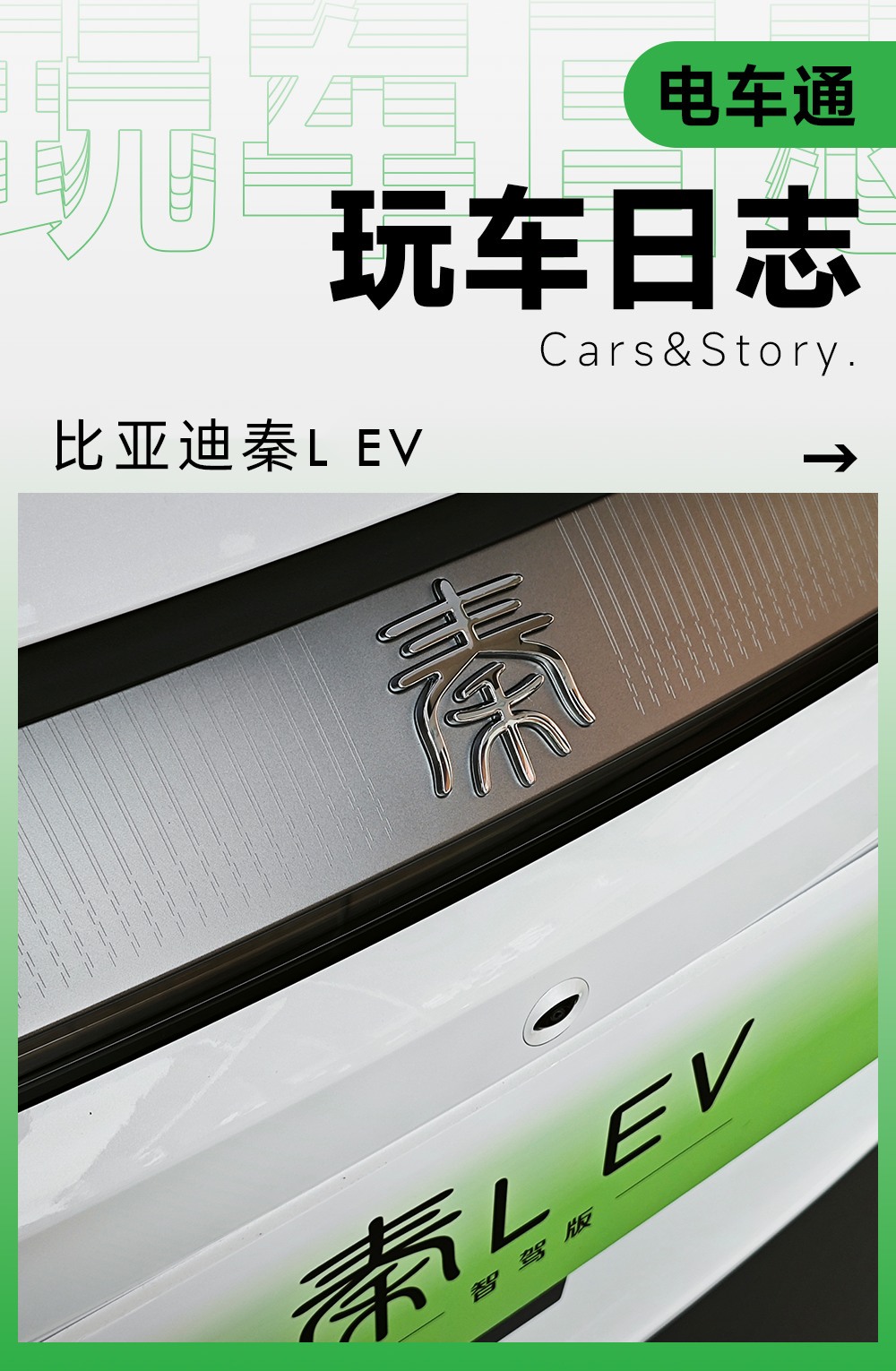
While the Qin L EV lacks the dominance of its DM version, BYD's latest offering signifies its intention to tap into the pure electric vehicle market.
Last year, BYD established itself in the hybrid market with the Qin L DM-i, boasting a 2,000km endurance and 2.9L/100km fuel consumption. The success of the DM-i technology further cemented BYD's position.
With the launch of the Qin L EV, BYD aims to expand its presence in the pure electric segment.
DiantuTong's search on automotive platforms with the keywords "under 150,000 yuan," "mid-size car," and "pure electric" revealed only seven products, with Deepal SL03, ARCFOX Alpha S5, and Roewe D7 attracting the most attention.
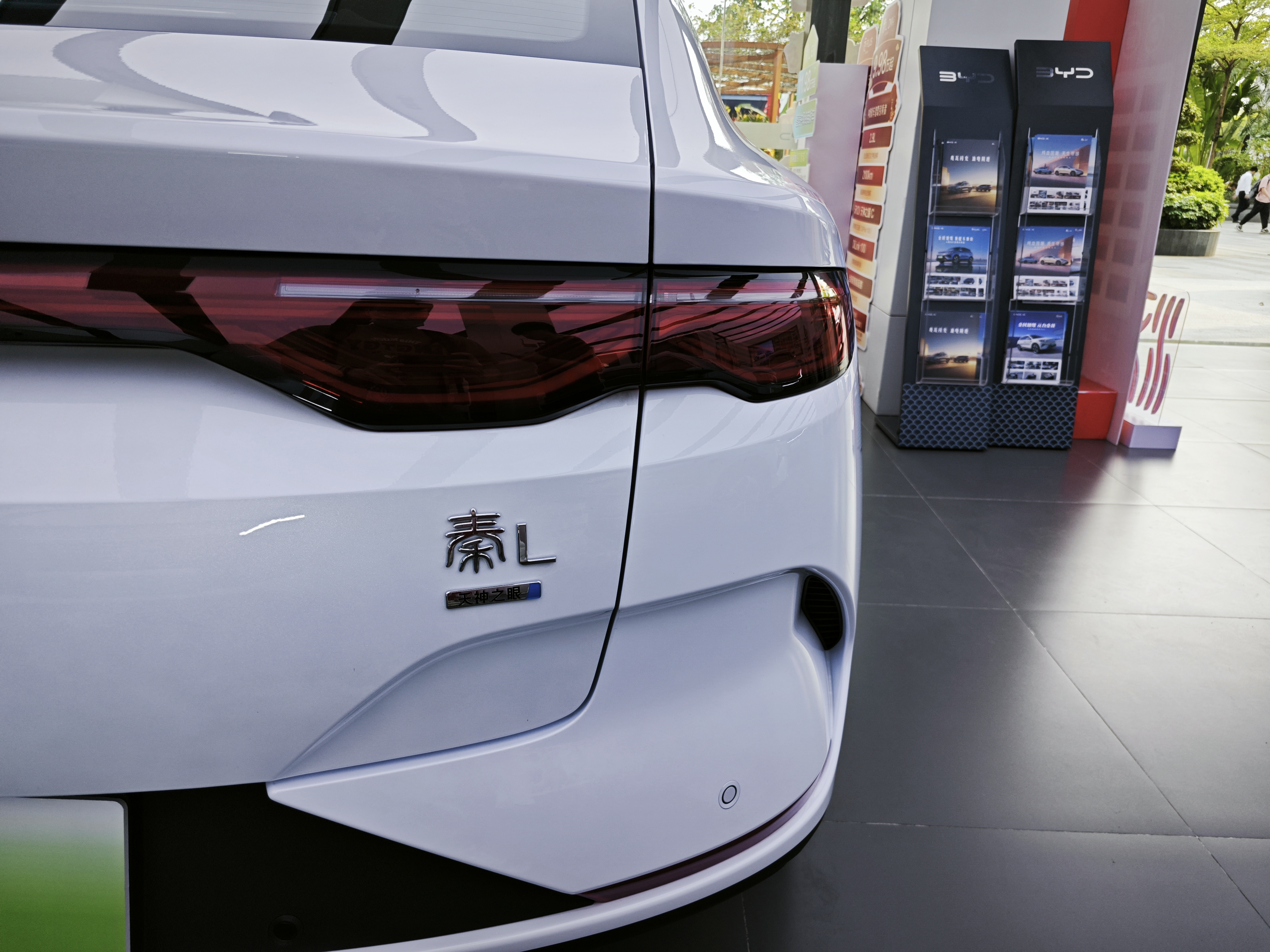
Image source: DiantuTong photography
The Qin L EV stands out with its lower starting price and standard inclusion of the Tian Shen Zhi Yan C high-end intelligent driving system. However, it falls short in fast charging compared to the Deepal SL03 and in endurance against the top-of-the-line Roewe D7, which offers 610km of pure electric range. Users seeking compact sedans with rich configurations may opt for models like the Xpeng MONA M03 and GAC AION S.
As of press time, BYD has not released order data for the Qin L EV, but given its endurance anxiety, market heat is expected to be less intense than that of the Qin L DM-i.
To gain a buyer's perspective, DiantuTong visited a nearby BYD Dynasty Network offline store.
Customers prefer mid to high-end versions for endurance and comfort
The observed BYD Dynasty Network store in Guangzhou was relatively small, with the established Yuan PLUS occupying the center. Only three vehicles, including Han and Qin L EV, served as supporting displays, with larger models like Xia and Tang absent.
Despite the small size, the store had decent foot traffic, with customers entering during working hours. Test drives could be scheduled at any time.
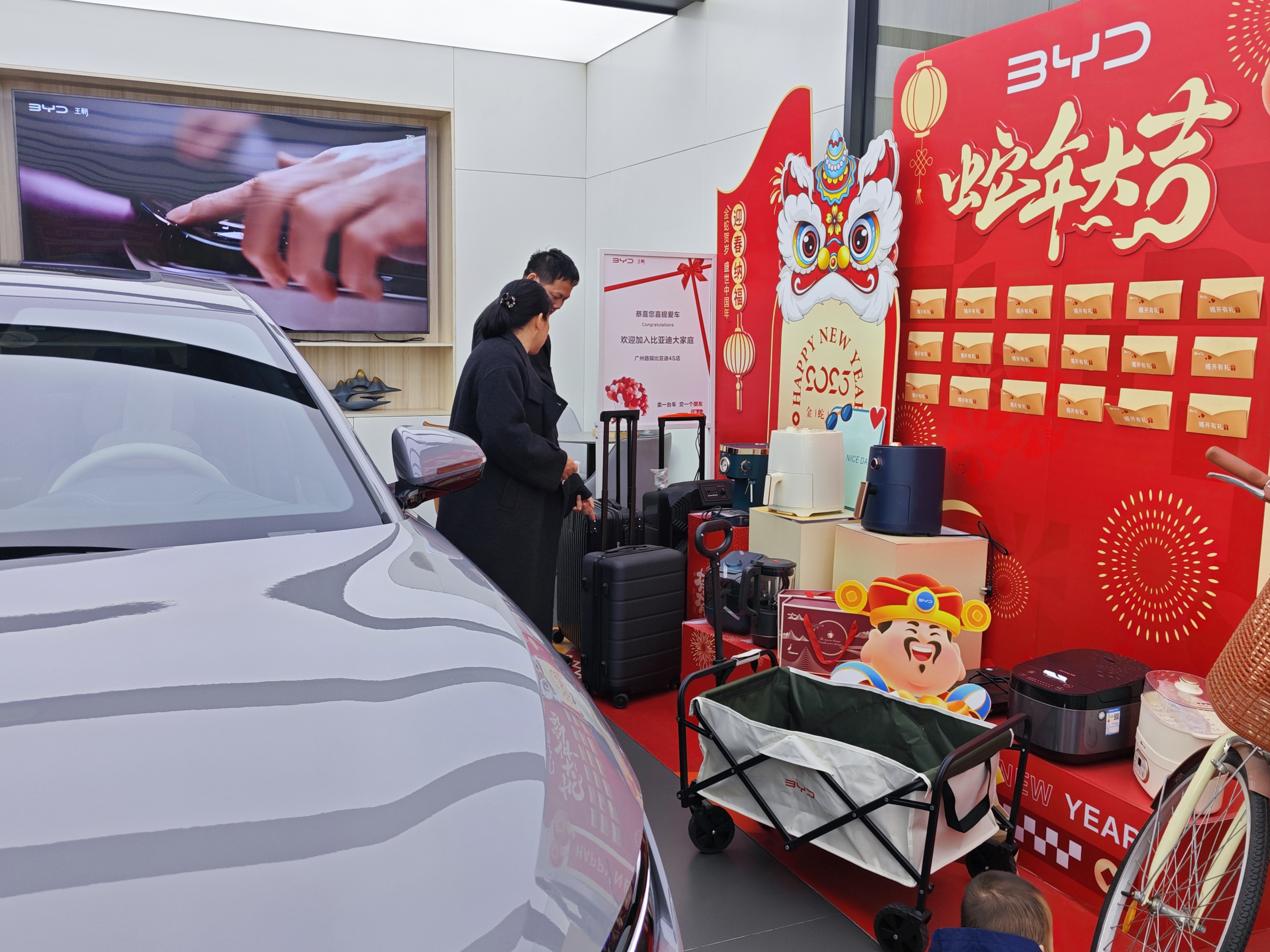
Image source: DiantuTong photography
DiantuTong observed that most customers were families, with the majority interested in DM-i models like Qin PLUS DM-i, Han DM-i, and Song PLUS DM-i. Only two customers specifically inquired about pure electric vehicles: DiantuTong for the Qin L EV and another customer for the Yuan PLUS.
The salesperson noted an increase in interest in pure electric vehicles this year but did not disclose the exact customer split between hybrids and EVs.
Regarding the Qin L EV, the salesperson mentioned that mid-range and high-end versions have been the most popular, with fewer orders for the entry-level version, which is favored by ride-hailing drivers.
After reviewing the Qin L EV's configuration table, DiantuTong understood why mid-range and high-end versions are preferred: The mid-range version offers higher endurance and performance for an additional 10,000 yuan, while the high-end version adds features like seat heating/ventilation, a car refrigerator, and HUD for an extra 20,000 yuan.
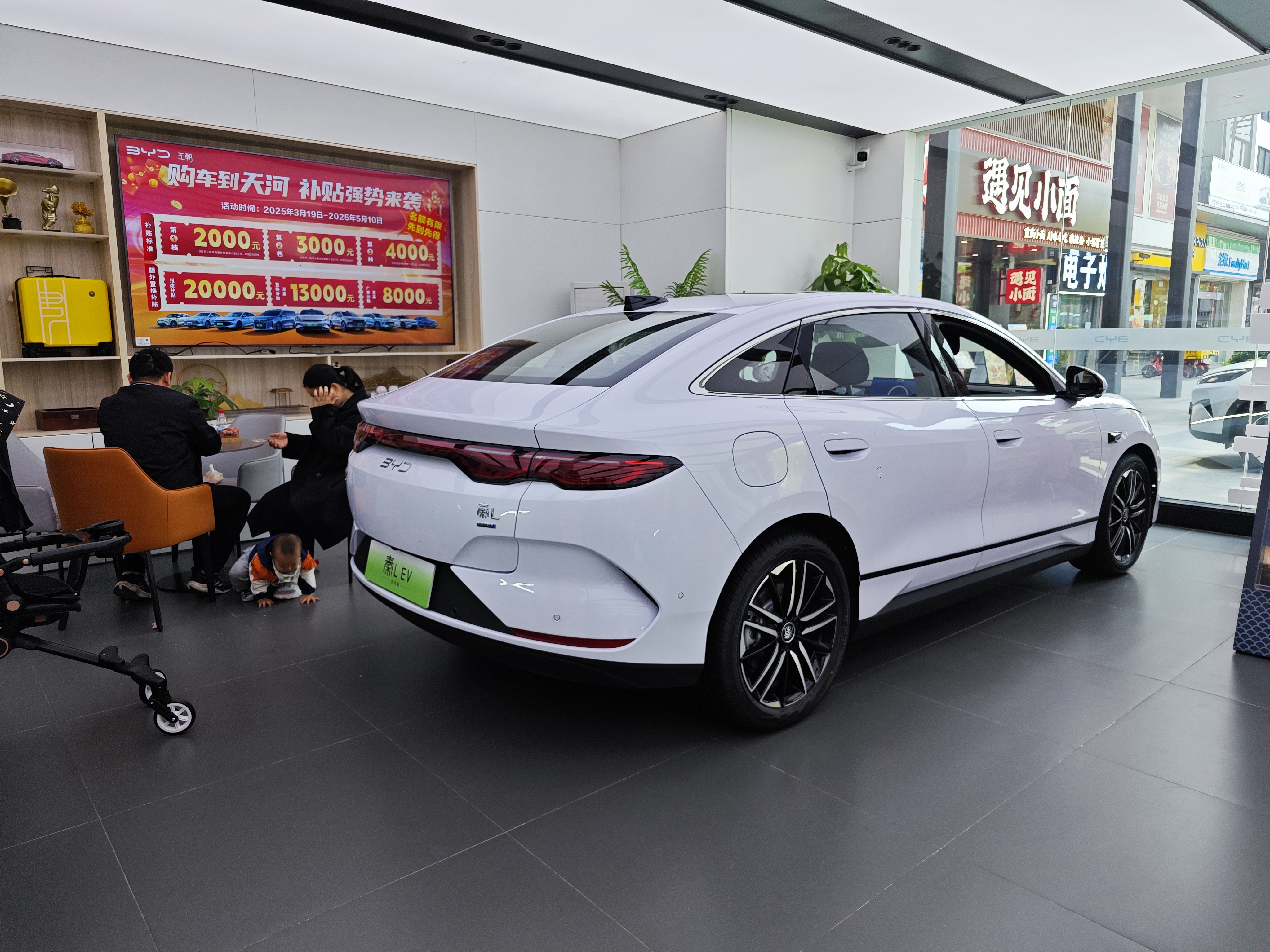
Image source: DiantuTong photography
When discussing competitors, the salesperson revealed that users prioritize passenger comfort and compare Qin L EV with models like the Xpeng MONA M03 and Deepal SL03. Users who choose Qin L EV are often driven by recognition of domestic brands and the comfort enhancements from space and intelligent driving.
While BYD's hybrid technology is well-established, the pure electric market is competitive. AION, Deepal, and new players like Xpeng all have their unique offerings. Customers are willing to pay for endurance and comfort, moving beyond cost-efficiency.
The Qin L EV: More than just a pure electric version of the Qin L DM-i
The Qin L EV shares a similar overall shape with the Qin L DM-i, with the most noticeable difference being the front grille. Due to less need for engine cooling, Qin L EV features a closed front face, giving it a visual resemblance to a "smaller BYD Han EV," reducing the ride-hailing stigma.
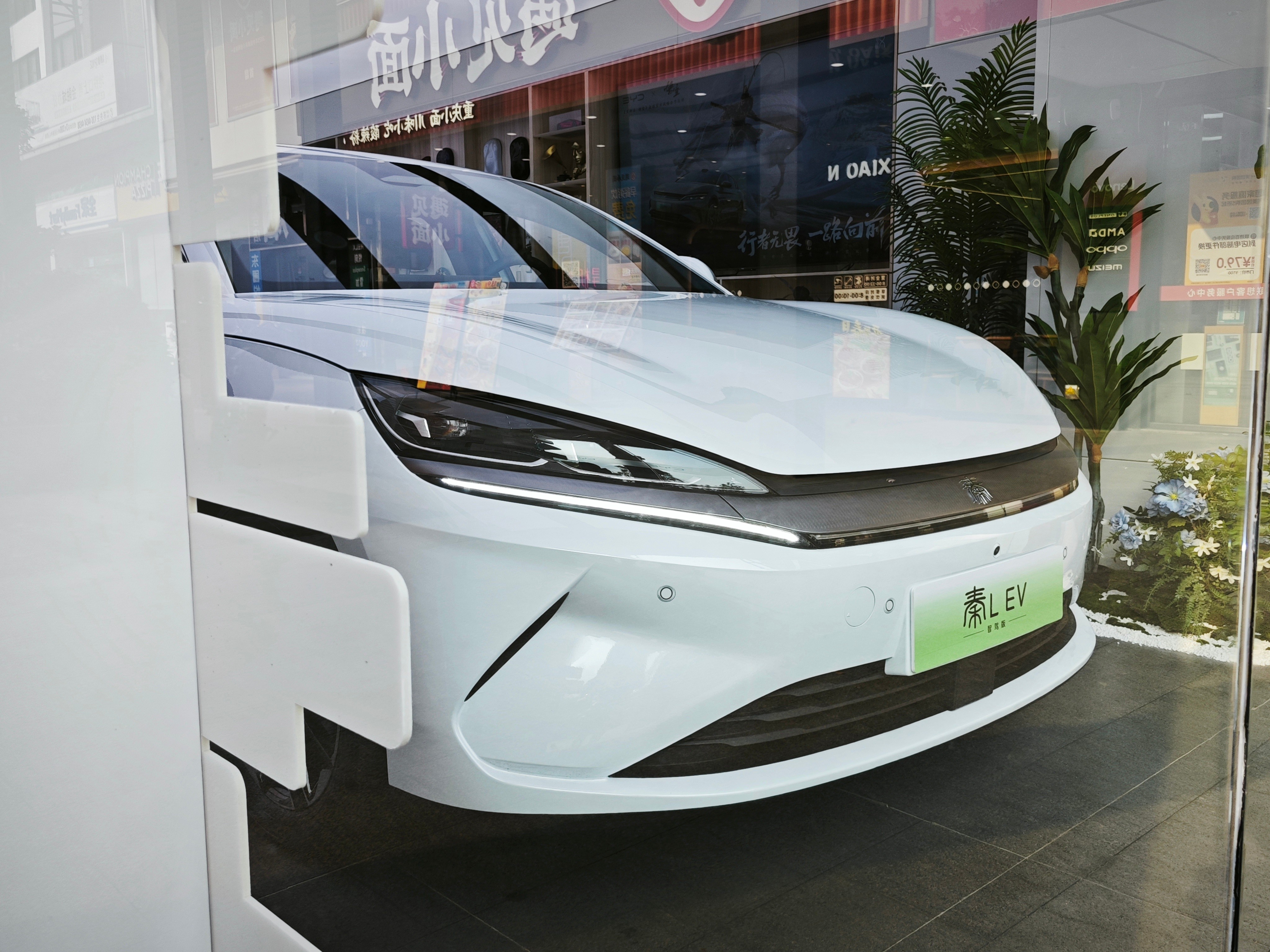
Image source: DiantuTong photography
Apart from minor exterior adjustments, Qin L EV boasts a 65L front trunk space for storing less frequently used items. Inside, the center console's trim panel seems narrower, maintaining a homely atmosphere. The high-end version comes with features like a 12-inch W-HUD heads-up display, a 15.6-inch floating central control screen, 50W mobile phone fast charging, and a car refrigerator.
The Qin L DM-i Intelligent Driving version, launched in February, simply adds the Tian Shen Zhi Yan C system to the old model, without the car refrigerator or 50W wireless charging. Additionally, Qin L EV uses a rear five-link independent suspension, providing a different riding quality compared to the Qin L DM-i's rear E-type four-link setup.
For a test drive, DiantuTong chose the mid-range Qin L EV, which shares powertrain parameters with the high-end version.
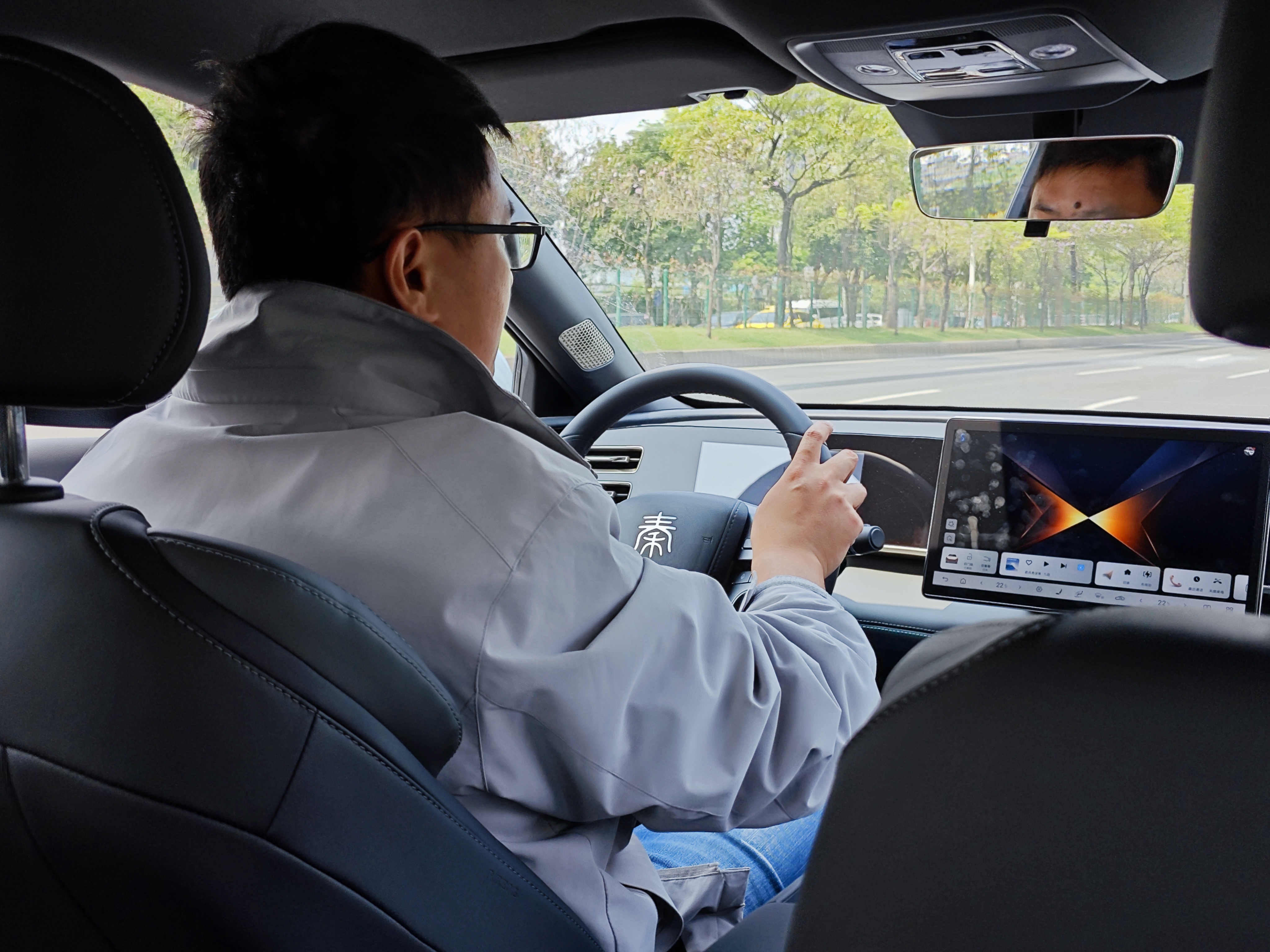
Image source: DiantuTong photography
The Qin L EV demonstrated strong acceleration, with a 0-50km/h time of 3.1s providing an immediate pushback feeling. While the official 0-50km/h acceleration figure suggests slower high-speed output, this will require further verification. For urban driving, Qin L EV's low to medium-speed performance is satisfactory.
Rear seat legroom is ample, with two charging ports and a central armrest with cup holders meeting basic needs. However, rear seats lack backrest adjustments, which is acceptable for a mid-size car under 150,000 yuan.
The chassis's vibration filtering ability impressed DiantuTong, with minimal impact felt on bumpy roads and bridges.
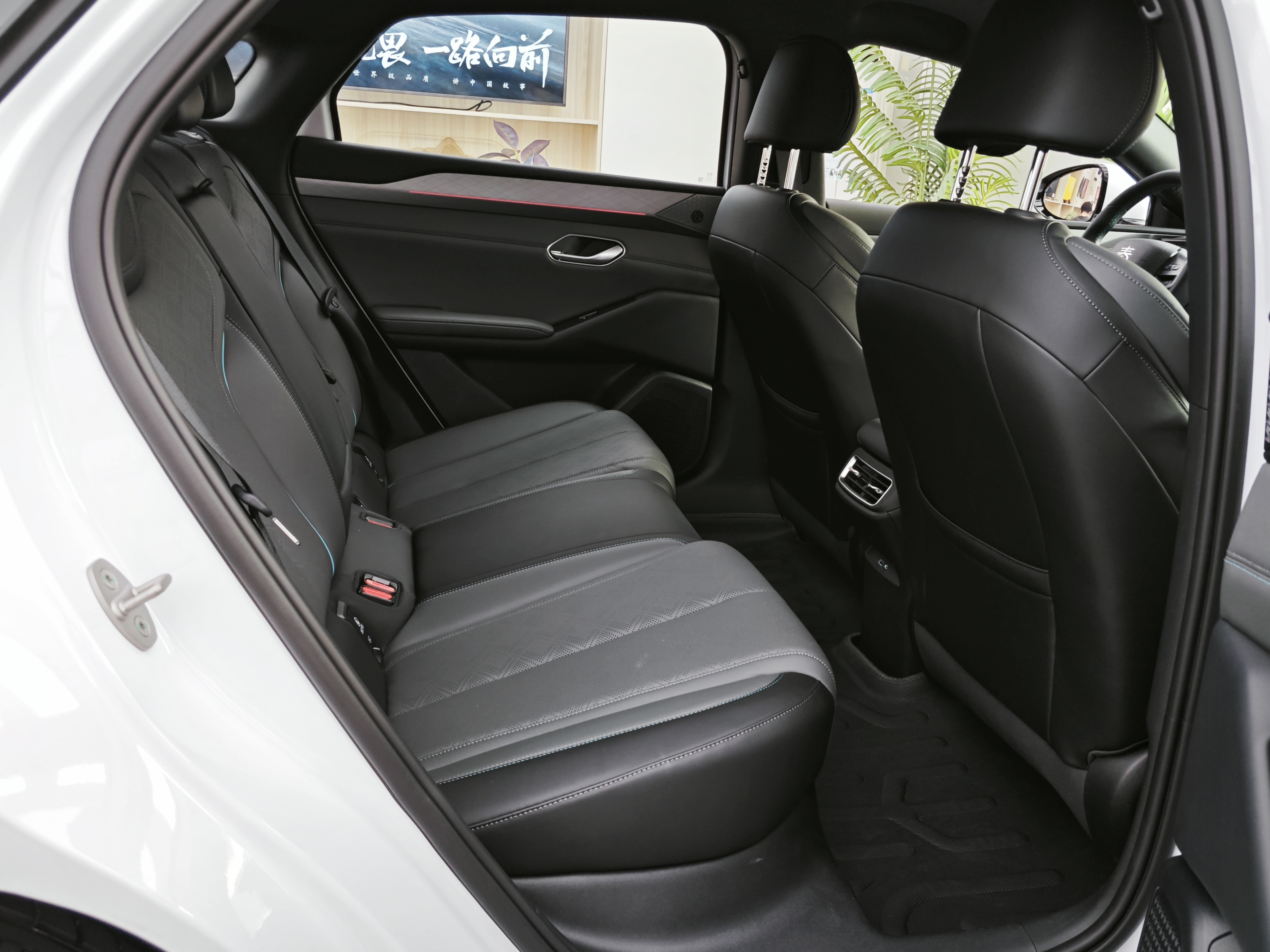
Image source: DiantuTong photography
Both Qin L EV and Qin L DM-i belong to the Qin L series. The upcoming new Qin L DM-i is expected to rival the Qin L EV in terms of configuration, potentially including features like a car refrigerator and five-link rear suspension. However, the latest Qin L DM-i Intelligent Driving version has only recently been launched, with the latest technology currently exclusive to the Qin L EV.
For those uninterested in the new configurations, the non-intelligent driving version of Qin L DM-i or the upcoming new Qin L DM-i may be viable options. Until then, the current intelligent driving version may experience price reductions to clear inventory.
Relying on driving comfort, will the Qin L EV win the market with "soft configurations"?
After experiencing the Qin L EV, DiantuTong gained a deeper understanding of this mid-size pure electric vehicle. While initially believing the main difference lay in the powertrain, it became apparent that the Qin L EV, benefiting from BYD's improved cost control, offers significantly more than its DM counterpart.
Following the success of the Qin L DM-i in the hybrid market, BYD expects the Qin L EV to expand its presence in the pure electric segment.
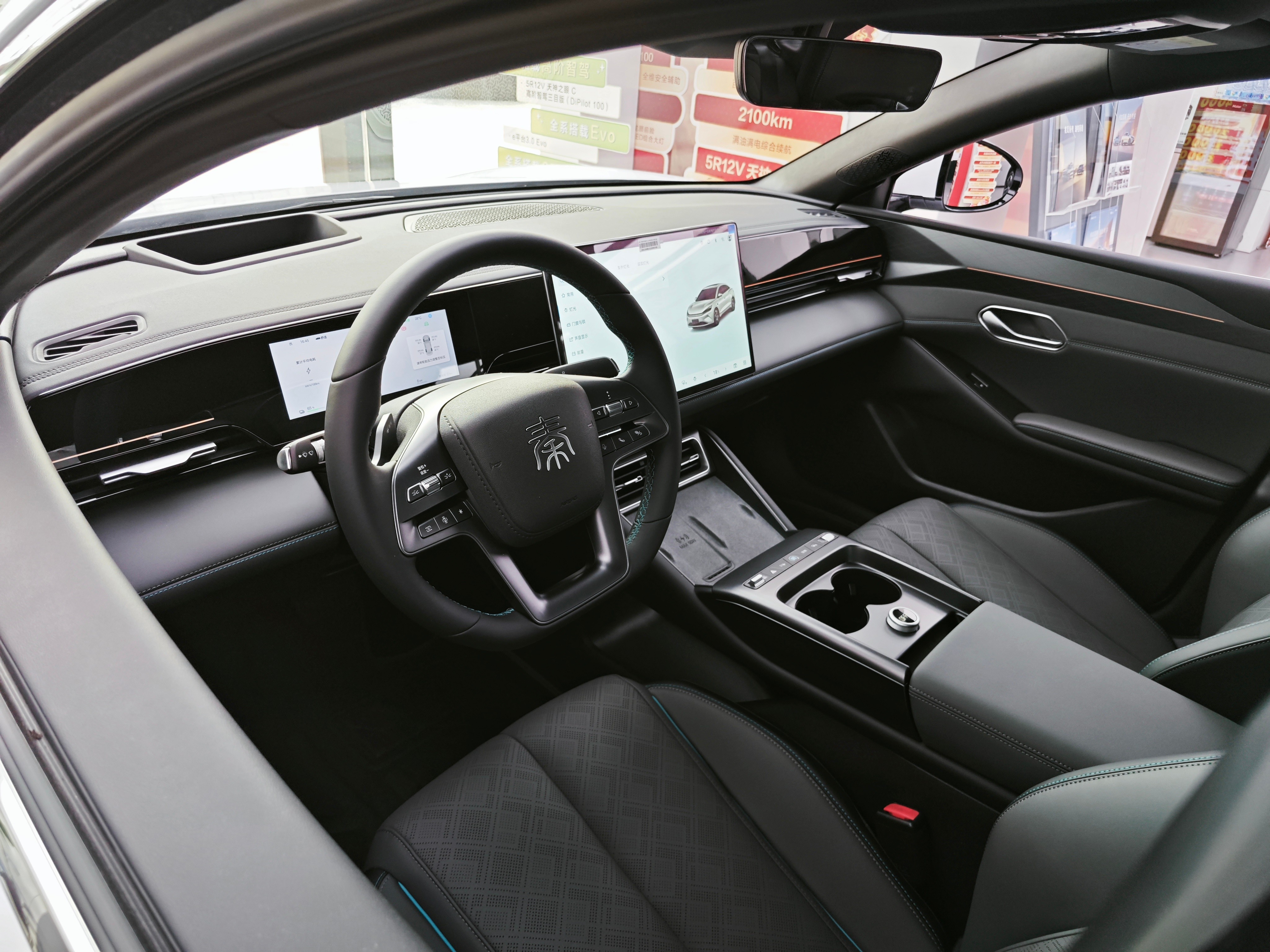
Image source: DiantuTong photography
Unlike the Qin L DM-i's dominance in energy efficiency, the Qin L EV does not lead in endurance or fast charging, key areas for users. Therefore, BYD has chosen to focus on the driving experience, catering to customer preferences with "soft configurations" like car refrigerators, seat ventilation/heating, large screens, and high-end intelligent driving systems.
With models like the Xpeng MONA M03, GAC AION S, and Deepal SL03 already in the market, whether the Qin L EV can smoothly surpass them will become clearer after a full sales month in April.
Source: Leitech







